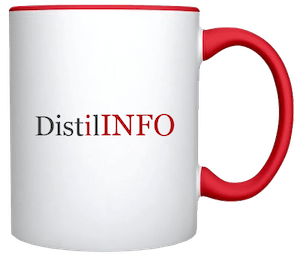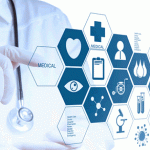Healthcare organizations continue to rely heavily on data analytics to try to improve COVID-19 outcomes and public health. Since the novel coronavirus became widespread in the U.S., healthcare data scientists have leveraged clinical and claims data to pinpoint which underlying conditions put patients at higher risk of complications from COVID-19. Health systems are mining clinical data to predict surges in COVID-19 cases and looking at key factors—including increases in hospital website traffic, such as searches for emergency department (ED) wait times and physician page clicks—to understand how COVID-19 is ramping up locally in real-time. Meanwhile, risk-based modeling has helped health plans address social determinants of health that could impede recovery.
Now, providers and health plans are refining their approach. The more they learn, the greater the benefit to public health and long-term outcomes. Three evolving use cases for using claims and clinical data to combat COVID-19 stand out.
Reduce disparities in care. Early in the pandemic, lack of complete information around patient demographics prevented the identification of members in communities that were most vulnerable to COVID-19 infection. The impact: severe differences in mortality rates. In Chicago, the rate of mortality among Black residents was alarmingly high—70% of COVID-19 deaths—even though these residents comprise just 29% of the city’s population. Meanwhile, Spanish-speaking residents account for 18.3% of the nation’s population, yet comprise 34.3% of coronavirus cases.
One of the reasons demographic data was often missing from COVID-19 lab tests is that laboratory and hospital staff were too overwhelmed with cases to have time to input all of a patient’s non-clinical information. Today, data scientists are working to fill in the gaps using clinical history and medical claims. With these analyses, healthcare organizations are closing gaps in care, such as by expanding access to COVID-19 testing for the nation’s most vulnerable populations and increasing access to professional interpreters to more effectively gather key patient details. They are also addressing social determinants of health that heighten risks, such as food insecurity and lack of access to prescription medications.
Want to publish your own articles on DistilINFO Publications?
Send us an email, we will get in touch with you.
Alleviate reliance on spotty testing. Not everyone who contracts COVID-19 has a healthcare encounter. For instance, if one member of the household tests positive for the coronavirus, other members may decide not to undergo testing if their symptoms are mild. These are instances where analyses of clinical and claims information already in the system—both emerging and historical data—can help spot unconfirmed cases of COVID-19. Such analyses give public health officials the information they need to contact, test,s and quarantine individuals that have contracted the virus, helping to limit the spread of the disease.
On a wider scale, data analysis can also provide early warning surveillance of potential COVID-19 cases, strengthening the pandemic response. For example, by observing increases in medical claims for telemedicine, rapid flu tests, and chest X-rays, data scientists can detect patterns in claims that suggest a COVID-19 outbreak is likely to occur. From there, they can forecast demand for hospital care up to 10 days in advance, ensuring that facilities have sufficient staff, supplies, and beds available to meet their community’s needs. Similarly, disruptions to seasonal flu trends, which remain fairly consistent within a region year over year, could alert public health officials to a potential COVID-19 outbreak.
Avoid preventable deaths. Information regarding patients’ underlying medical conditions can be hard to come by during a public health crisis as overwhelming and widespread as the current pandemic. In fact, just 5.8% of medical records for patients hospitalized with COVID-19 in Q1 2020 had data available related to their underlying health conditions and other risk factors. Today, it is known that certain chronic conditions raise the patient’s risk for severe complications from COVID-19—and that list of conditions is growing. The insight gained from these analyses not only informs how healthcare providers treat an individual’s illness, but also gives those with chronic disease the ability to make informed decisions based on their risk level for infection.
Moreover, the availability of actionable, real-time intelligence to improve health can set the stage for increased care collaboration. During COVID-19, healthcare providers across geographies are sharing their knowledge, especially regarding treatment protocols. Such learnings include the value of using high-flow nasal oxygen in treating severe cases of COVID-19. Early results show that this technique has a positive impact on patients with mild to moderate respiratory failure. It also reduces intubation rates and improves clinical prognosis for patients with acute respiratory failure. By sharing data-driven insights, organizations can work together to improve COVID-19 outcomes and reduce avoidable deaths.
Improving Outcomes and Reducing Risk
Clinical and claims data analysis helps healthcare organizations respond proactively to COVID-19. With the race toward a COVID-19 vaccine well underway, these analyses will help identify which populations should receive the vaccine first, assess reactions to the vaccine by demographic group and spot trends that could affect vaccination protocols. They also give healthcare organizations up-to-date contact information to engage patients, which will be critical to clinical efficacy if a second dose of the vaccine must be administered. In 2020 and beyond, continued focus on clinical and claims data analysis will be key to facilitating a robust response that enhances outcomes and saves lives.
Source: Hit Consultant








